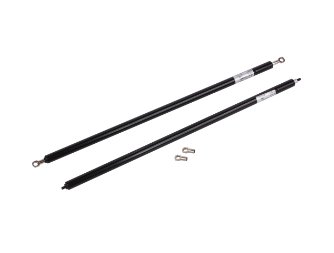If you are interested in our products ,please contact our team
Gas springs are maintenance-free, self-contained cylinders that generate force. They lift and reposition covers, chairs, tabletops, and a variety of other components.
To generate a precise external force, the cylinder is pre-charged with nitrogen gas.
Push-type gas springs have an output force that is produced by applying pressure to the piston and its diameter area.
A variety of common, off-the-shelf devices is readily accessible from several manufacturers when a design requires the application for an industrial gas spring.
However, purchasing a gas spring from a catalog carries a number of hazards.
Depending on the application, some degree of customization may be required to guarantee the appropriate gas spring is selected.
Engineers or designers should grasp the fundamentals of how gas springs function in order to comprehend the crucial elements to consider when obtaining a bespoke gas spring.
Gas springs contain pressured nitrogen gas, which provides a certain pressure. In push-type gas springs, the pressure is transmitted on the piston, thus generating the thrust.
Nitrogen is metered through a vent in the piston, which regulates the piston's velocity while producing a consistent output force when the piston rod is pressed and compressed.
To obtain the most performance out of an off-the-shelf gas spring, you should start by identifying the following parameters.
Sometimes errors occur in this area, but the appropriate gas spring manufacturer may offer the resources and engineering assistance needed to get designers up and running.

This determines the size and weight of the object being lifted. To get excellent outcomes, measure the object's weight on a spring scale.
Alignment:
The gas spring's body should fit within the assemblage without anything constraining its balance, coordination, and mobility.
The pivot point, also known as the hinge, serves as the rotational axis for hoods, coverings, and other spinning items. Should it be located at the top, in the centre, or at the bottom?
This point answers the question “Where will users use force to transfer the weight when they push or pull?”
This refers to the angle at which the load is applied before the spring starts to move.
The load's angle at the spring's final position is known as the finishing angle.
This is the magnitude of force required to move a weight.
An application engineer may assist in determining the required manual force at various angles of direction during the load's entire motion.
Gas springs use extension forces to counteract the weight being pushed.
The amount of nitrogen that gets within the spring that forces the piston head and provides it the force required to move the load is determined by the manufacturers.
Considering how gravity affects the geometric features and weight of the load is crucial for choosing where to install the gas spring, and the effort required to counteract the load.
The distance the weight must travel in one stroke. A gas spring must be able to handle the installation's whole force, therefore check this.
The way the gas spring is attached controls the releasing angle of the load as well as the distance the gas spring needs to lift the load successfully, which is generally referred to as a stroke.
We have been producing gas springs for decades and have a solid foundation. We are an internationally recognized corporation, and our brand is well-known across the purchasing sector.
Our clients recognize us for our one-of-a-kind items all around the world. Invest in us immediately and receive high-quality gas springs.
You can contact us at any moment through our website to obtain high-quality products.